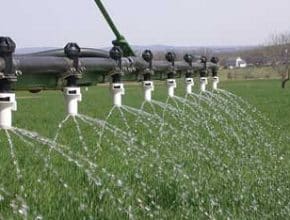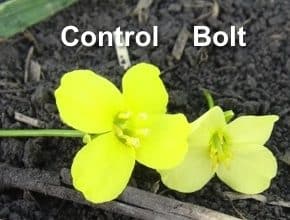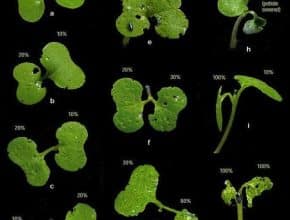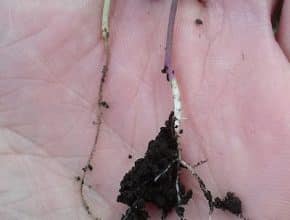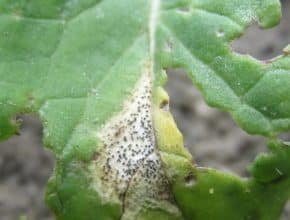Canola crops across the Prairies look very good, in general, and growers are optimistic at this stage of the season. Top-dress fertilizer is a hot topic this week. The most efficient way to apply fertilizer on the Prairies is during the seeding pass, but some circumstances do call for top up nitrogen or sulphur for canola. Seedling diseases such as…
June 12, 2013 - Issue 11
-
-
Click here for more information on products, rates and timing for best results from a fertilizer top-dress. This article has just been updated. If you’re on the fence about a top-dress application, consider applying a rate high enough to make a difference — such as 30 pounds of nitrogen or 20 pound of sulphur — to part of a field…
-
Spraying late or at higher-than-label rates can reduce canola profits. AAFC research showed an advantage of 3 bu./ac. for controlling weeds at the 1-2 leaf stage of canola versus the 3-4 leaf stage, and a 7 bu./ac. advantage when applied early versus the 6-7 leaf stage. At $12 per bushel, that early control provides $36 to $84 per acre more…
-
Applications made when cool cloudy days follow cool nights will result in lower herbicide efficacy than applications made in warm sunny days. Cloudy days don’t provide the photosynthetic activity required for many herbicides, including Group 10 glufosinate. And nights near freezing followed by days with highs that barely reach 10 C will not provide high metabolic activity required for best…
-
Flea beetle spraying picked up again this week, as more canola fields reached thresholds. Don’t give up on flea beetle scouting just yet. Click here for more on the flea beetle spray decision. Cutworm feeding has been detected in some fields, but spraying is still minimal at this time. Digging will be required to distinguish whether cutworms or wireworms are…
-
If plant counts are lower than you expected based on your seeding rate, taking time now to figure out why will help fix the problem for next year. Use the Canola Diagnostic Tool to help. While scouting, look for the following, which will help with the diagnosis:…
-
Canola seeded too deep is at higher risk of seedling diseases. Deep seeding requires a long hypocotyl for the plant to reach the soil surface, which exposes more of the plant to soil-borne disease pathogens. Deep seeding also extend the days to emergence, which means the plant is at its vulnerable stage for longer…
-
-
Early season hail rarely has an impact on canola yield potential. Hailed seedlings usually come back very well. If hail breaks off both cotyledons or snaps the stem, these plants usually do not survive. But even in these severe cases, while individual plants may die, a whole canola crop is fairly resilient to early season hail when it comes to…

